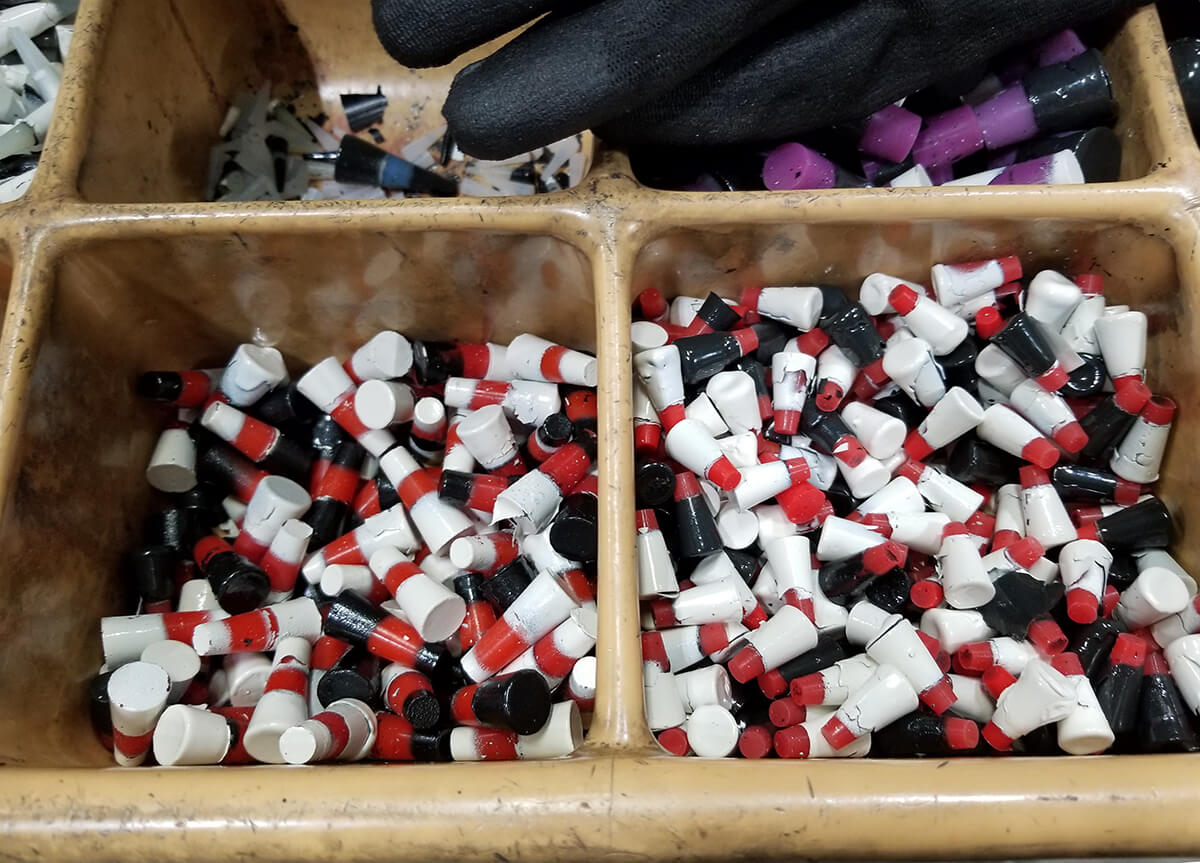
Q – We use silicone masking caps and plugs in our powder coating line. After a few uses the paint builds up and begins to flake off during the subsequent wash cycles, contaminating the finish. How can we clean these to get the most use out of them?
A – This is a common question we receive. The answer is not as straightforward as it may seem. Just because you can clean them, should you? Let’s explore this a bit.
First, we never recommend chemically stripping masking materials. Depending on the cleaning agent used, it could damage or alter the mask – potentially changing its fit and, ultimately, effectiveness. Additionally, we have seen that if those cleaning agents are not completely rinsed off, contamination downstream can occur, causing extensive rework.
This leaves mechanically removing the paint build-up. Manufacturing engineers at various companies have developed their own unique ways to accomplish this. These are generally based on deburring methods – barrel tumbling and vibratory finishing. Both methods can break loose the baked-on paint. However, static electricity often will hold small bits of fragmented coating on these silicone caps or plugs. These pieces need to also be removed so that they do not come off during the next wash cycle in the coating line. Therefore, companies often utilize a second step – washing. After the parts have been tumbled they are placed in to a net or mesh bag and into a washing machine with very mild detergent and run through a complete wash cycle. To prevent adhesion issues these parts must completely dry before being reused.
This brings us to the “should” masking parts be washed? The mechanical process needed to clean them is very labor intensive and time consuming. Each part should be tumbled separately to avoid sorting mistakes. Most times, a production part requires multiple and sizes of masking. This potentially means a different tumbling cycles for each mask. For efficiency, multiple tumblers would be needed. If additional media is added to the vibrating or tumbling apparatus, parts must be sorted before washing and drying. All of these steps are quite resource intensive.
So, when we are asked how to clean parts, generally we recommend against it. From a pure cost-analysis standpoint, especially for standard caps and plugs, we have found that it is consideraly more expensive to wash them than replace them. Working closely with your masking supplier you may be pleasantly surprised – increased volume may result in an overall discount on your masking products, offsetting the cost of replacing the masking more often.
